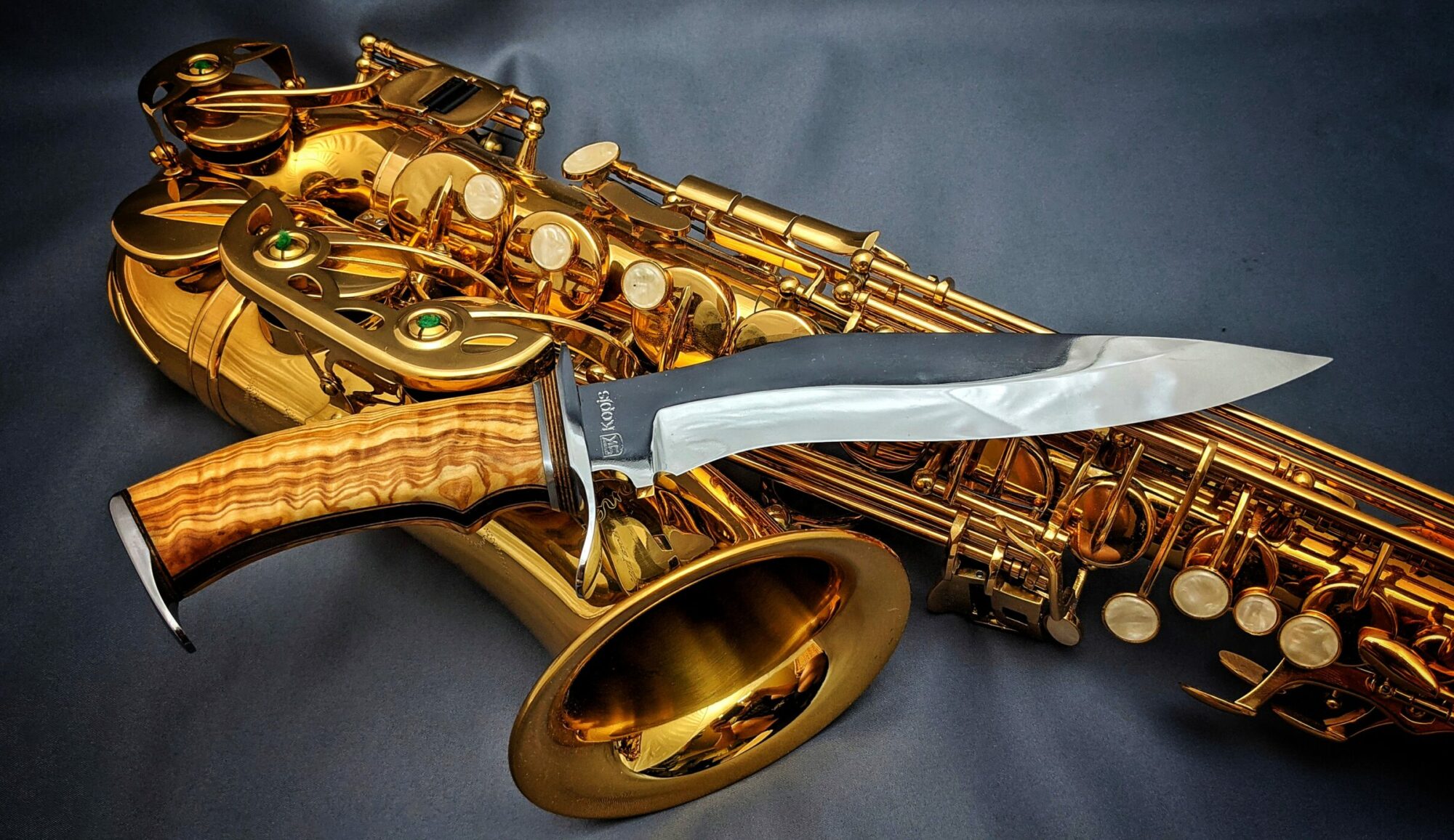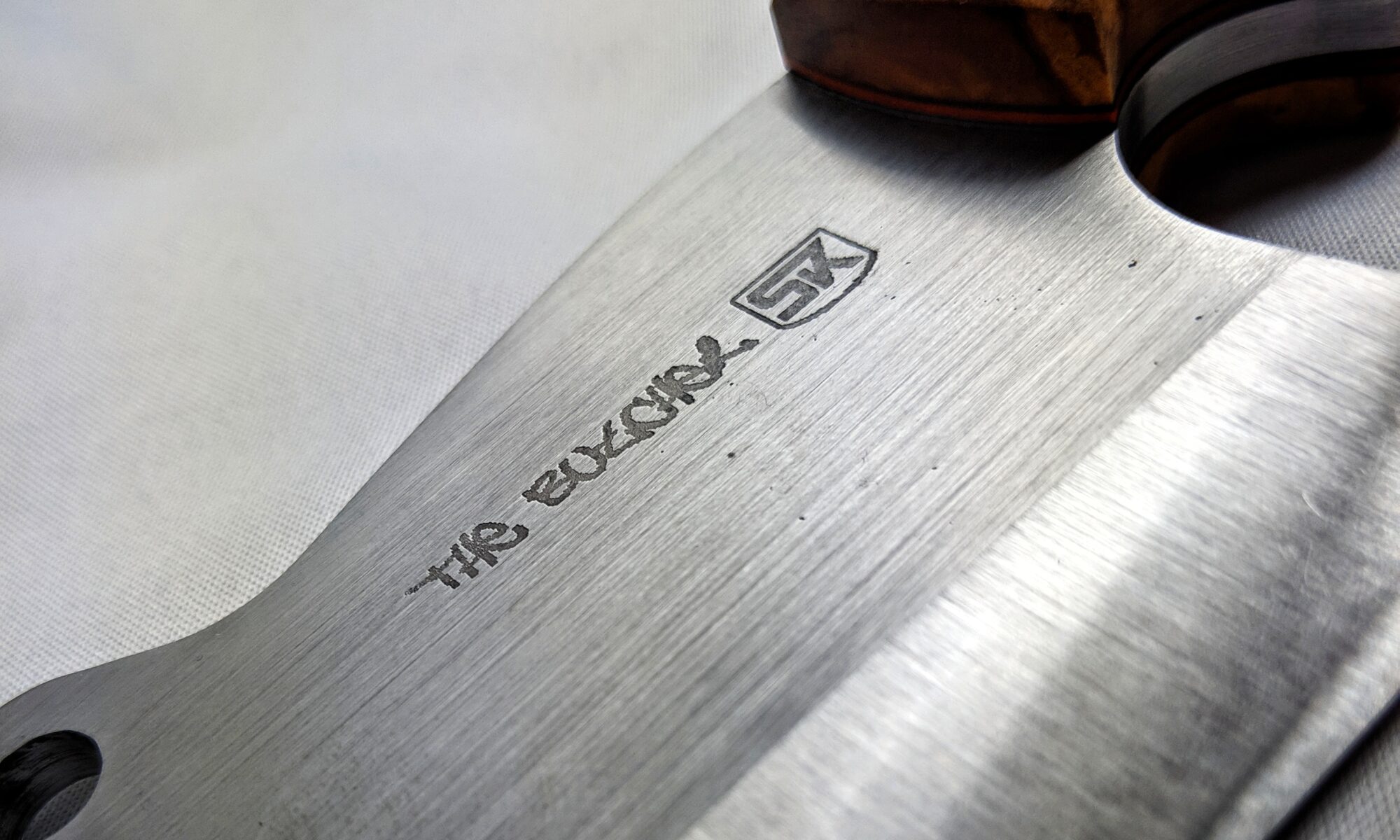When I used my first self made kitchen knife for cooking I was a bit scared when I saw my knife afterwards. I had been cutting a lot of onions for the meal and the blade had lots of spots and stainmarks on it. I wasn’t even able to srub them off. I thought that I probably made something wrong with the knife like chosing a wrong steel or something.
So I started to research and – started breathing out again – I did nothing wrong. Everything was pretty normal. I was just used to stainless steel knives all my life so that I simply did not know how knives react when they are made out of other materials.
Ok… one thing I did wrong: After cutting the onions I did not wash the blade right afterwards but let the knife lying on the kitchen desk. That is something I could do better to reduce staining.
As I said it is totally normal, and as written by Daniel Gritzer [2] it is something that gives your blade personality over time (the article is very inspiring to read).
But yes, carbon steel can and will rust if you don’t treat it right. Don’t let it sit in the sink after use, like you probably do with the usual stainleless steel blade. So wash it, wipe it clean and dry it off after each use. You can also use some veggie oil (non mineral oil!) to protect the blade. Just like you do with cast iron pans. And never put the knife into the dish washer (something i do not recommend for any knife).
Walter Sorrells explains it perfectly on Youtube [1]. The blade will develop a patina over time that consists of magnetite [3]. Magnetite is the most stable compound of iron and oxygen and this protects the blade from rusting. The process is known as bluing [4]. You probably know the look from old wrenches or heavy used cast iron parts like vices – they don’t look silverish and shiny anymore but developed a dark grey or bluish patina.
But what if the blade starts to rust. Walter describes it in the same video [1]: put the blade (not the handle) into boiling water for about 10 minutes and brush of the blade afterwards – you will see the brownish rust has turned into dark grey magnetite patina. Just watch the video (and subscribe to his channel) to get the perfect idea.
So why use carbon steel at all? Daniel Gritzer writes [2] that carbon steel is harder and holds the edge for a longer time than stainless steel. But despite the material is harder, it is more easy to sharpen again. Perfect for people who like to care for their kitchen tools and equipment and always love to have a sharp blade at hand when needed.
Literature and Links
- Walter Sorrells on YouTube: Carbon Steel Knife Care – Kitchen and Outdoor Knives
- Daniel Gritzer on seriouseats.com: Why Serious Cooks Use Carbon Steel Knives
- Magnetite on Wikipedia: Magnetite
- Bluing on Wikipedia: Bluing (steel)


